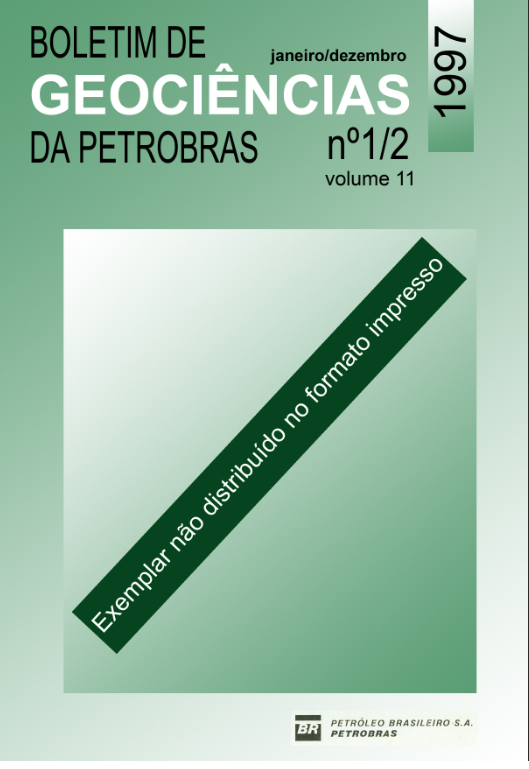Comparative analysis of the paleogeology along the Atlantic brazilian and African shores
Abstract
Many professional geologists are not familiar with the origin of certain concepts. This is the reason that when making references, they do not give credit to the real authors. This paper recovers a paper which is essential to understand the evolution of the Brazilian sedimentary basins. This article was first published in 1972 and it was the first one based on plate tectonics which developed a more global vision on the evolution of the basins known up to that time. In some details it is outdated, many interpretations have changed, but the basic ideas about the evolution of the basins are accepted and used today. It should be remembered that the present data were not available and some features – e.g the Pendência Graben – were unknown; it was the very beginning of basin exploration such as in the Campos and Santos basins. The interpretation premises of the work were developed by a team of geologists working at the SETUP (today CEN-NOR) in Bahia. In the following year, a summary of the original report was presented during the 26th Congress of the Brazilian Geological Society (SBG) held in Belém (Pará State). Due to a fault of the organizing committee, the paper was not published in the Congress proceedings, it was only printed as internal reports produced by the DIDEP/SETUP/BA (1972) and the DEXPRO/Rio (1972). In order to publish this paper in the BGP, an attempt was made to maintain the original form, as it should had been printed in the Congress proceedings. Also, in order to make editing easier, figures 11 and 12, the stratigraphic tables for the main Brazilian basins and their African correlates are not being published. It is believed that the understanding of the work will not be affected. We hope that other important papers that are unknown to Brazilian geologists can be restored. The Brazilian and Western African coastlines were orientated by the ancient structural lines. In the Upper Jurassic, continental deposits were accumulated within the Afro-Brazilian trough, extending from the Alagoas Cameroun to the Almada-Congo areas. The Wealden reactivation established the coastlines along the rift valleys. The first one, from south to north, along the
underlying alignments, and the second, from west to east, cutting across and giving rise to a series of lakes. During the Aptian, the first marine transgressions took place, building up two proto-oceanic gulfs. One of them, bounded by the Walvis-Rio Grande and the Pernambuco-Cameroun protochains, favored the deposition of thick evaporite deposits. To the north,
the second gulf maintained an open connection with the ocean. From the Albian to the Turonian, the two continents remained linked. However, due to the progressive separation of the plates, pulsation transgressions took place until full marine conditions were attained. The rupture of the last link between the two plates was during the Turonian and the Santonian. Shearing stresses occurred along the Brazilian northeastern and the Gulf of Guinea coasts, caused by the transcurrent displacement of the two plates. However, to the south of Pernambuco-Cameroun, tension stresses were always registered while the continents were migrating. When both plates were completely free, the African plate was released from the tension stress, giving rise to the compression of the Benué trough. During the Cenozoic, the uplift of continental belts, adjacent to the coasts, supplied the continental margins and intracratonic basins with sediments.
Downloads
Published
Issue
Section
License
This license enables reusers to distribute, remix, adapt, and build upon the material in any medium or format, so long as attribution is given to the creator. The license allows for commercial use.



